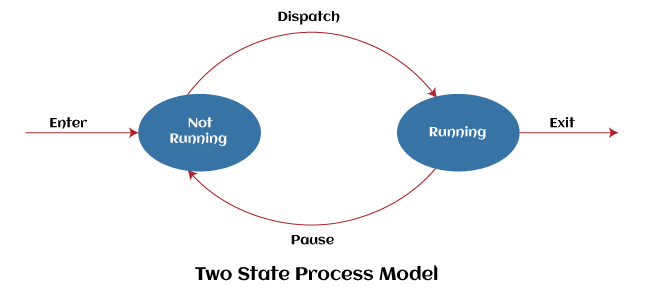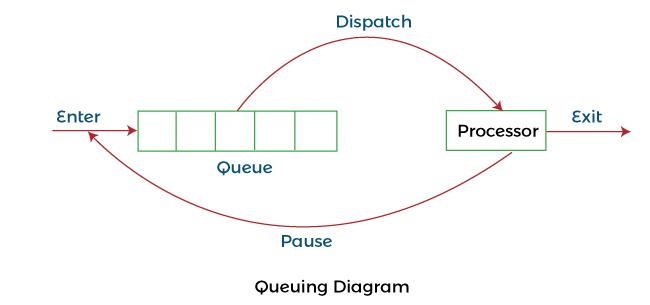Two State Process Model in Operating System
The OS process’s passes from many states, beginning from its formation to its completion. A process is made up of program data and its associated data and a PCB. A process can change its state due to the following events such as I/O requests, synchronization of processes, interrupt routines, process scheduling algorithms, etc. The process can run or cannot run, and if the process is running, it has to be supported by the systems for proper progress of the process.
Two-State Process Model

It is the simplest process model in the process state model because it has only two states. These states are as follows:
1. Running State
It is the current process state in which the process is running.
2. Not Running State
It is the state of a process that is waiting for running.
Execution of Two-State Process Model
This process state may be created anytime, whether a process is running or not.
- Firstly, when the operating system starts a new process, it also constructs a PCB for it so that it may enter in the system in a non-running condition. When a process exits or leaves the system, the OS is aware about it.
- The currently running process would be interrupted or broken into from time to time, and the operating system will execute any other process.
- Now, the former process transitions from the running to the non-running state, while one of the other processes transitions to the running state before exiting the system.
Processes that are not currently running must be placed in a queue and wait for their chance to execute. There is only a single queue, and the entry is a pointer to a PCB. It has a block that stores information in a data structure such as context data, state, program counter, identifier, etc.

You must be aware that a queue may contain linked list blocks representing a single process. If a process is interrupted, it is shifted to the queue waiting process, and if the process is finished its execution, it is terminated. The dispatcher then chooses another process from the queue and runs it. The dispatcher’s behavior is shown in the above queuing diagram.
